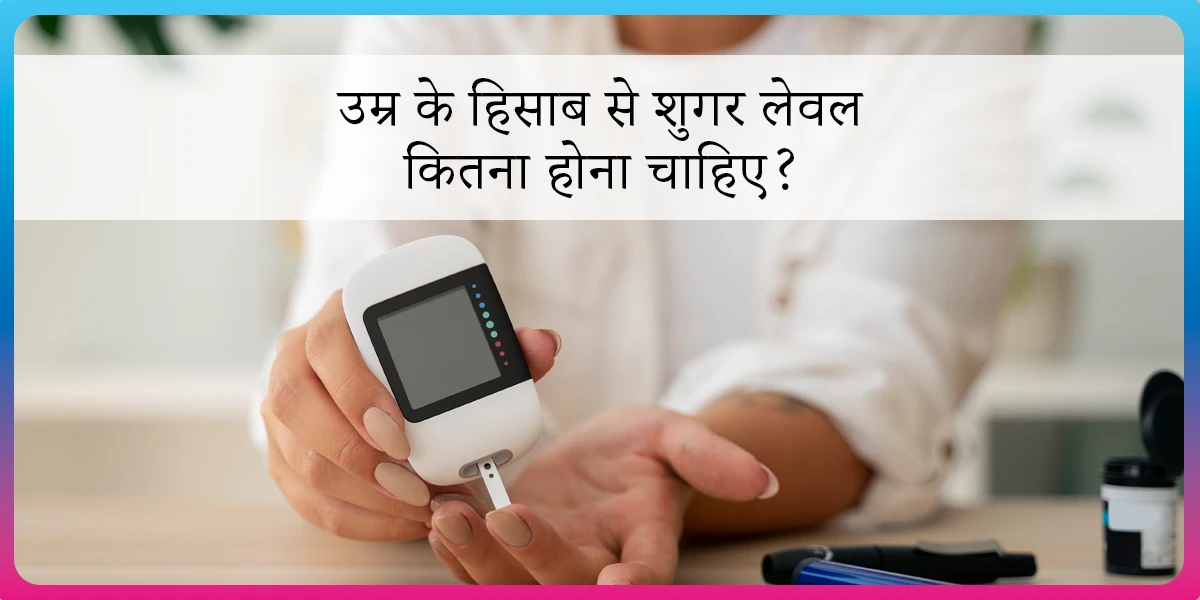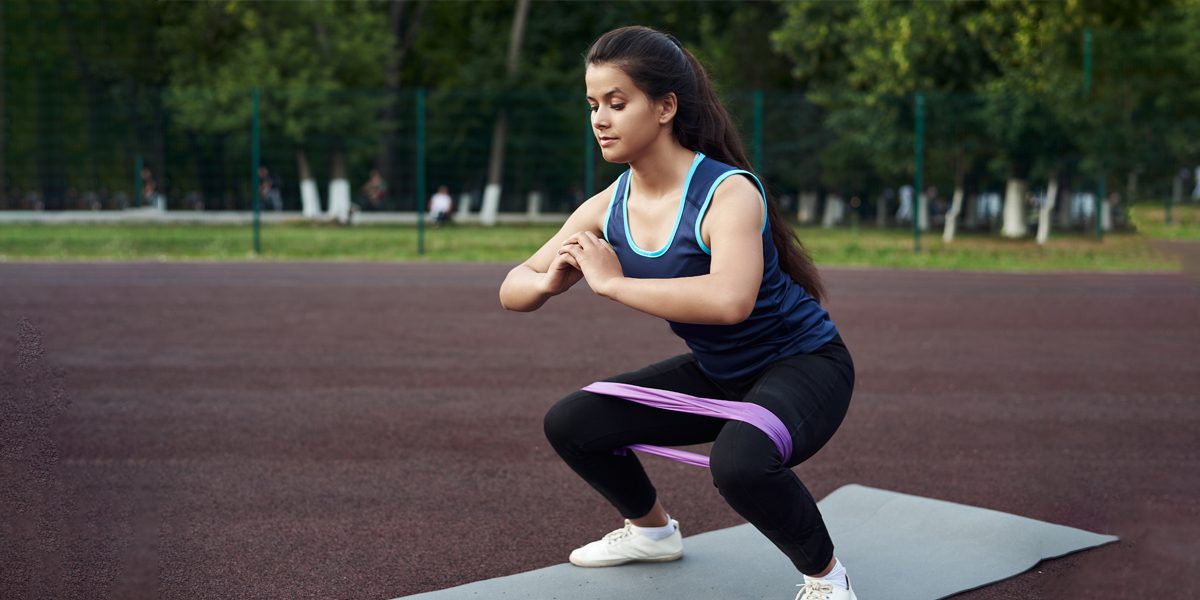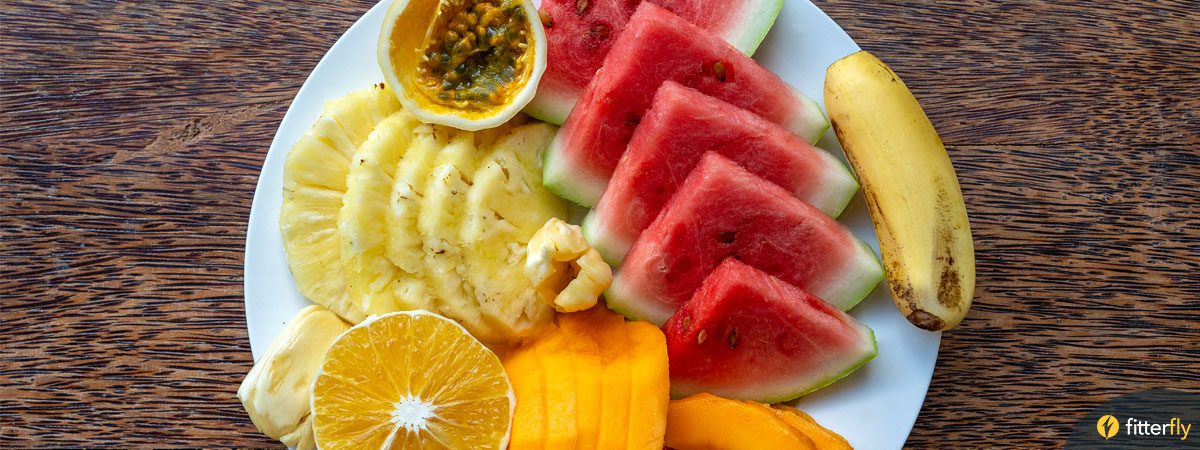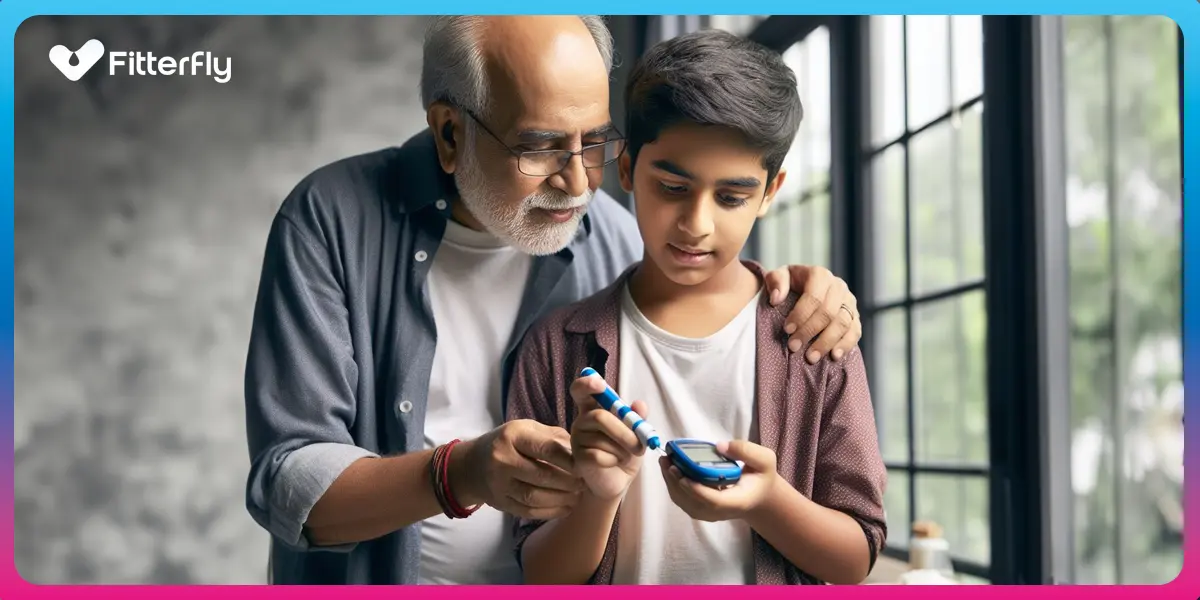Is Chapati Good For Diabetes?
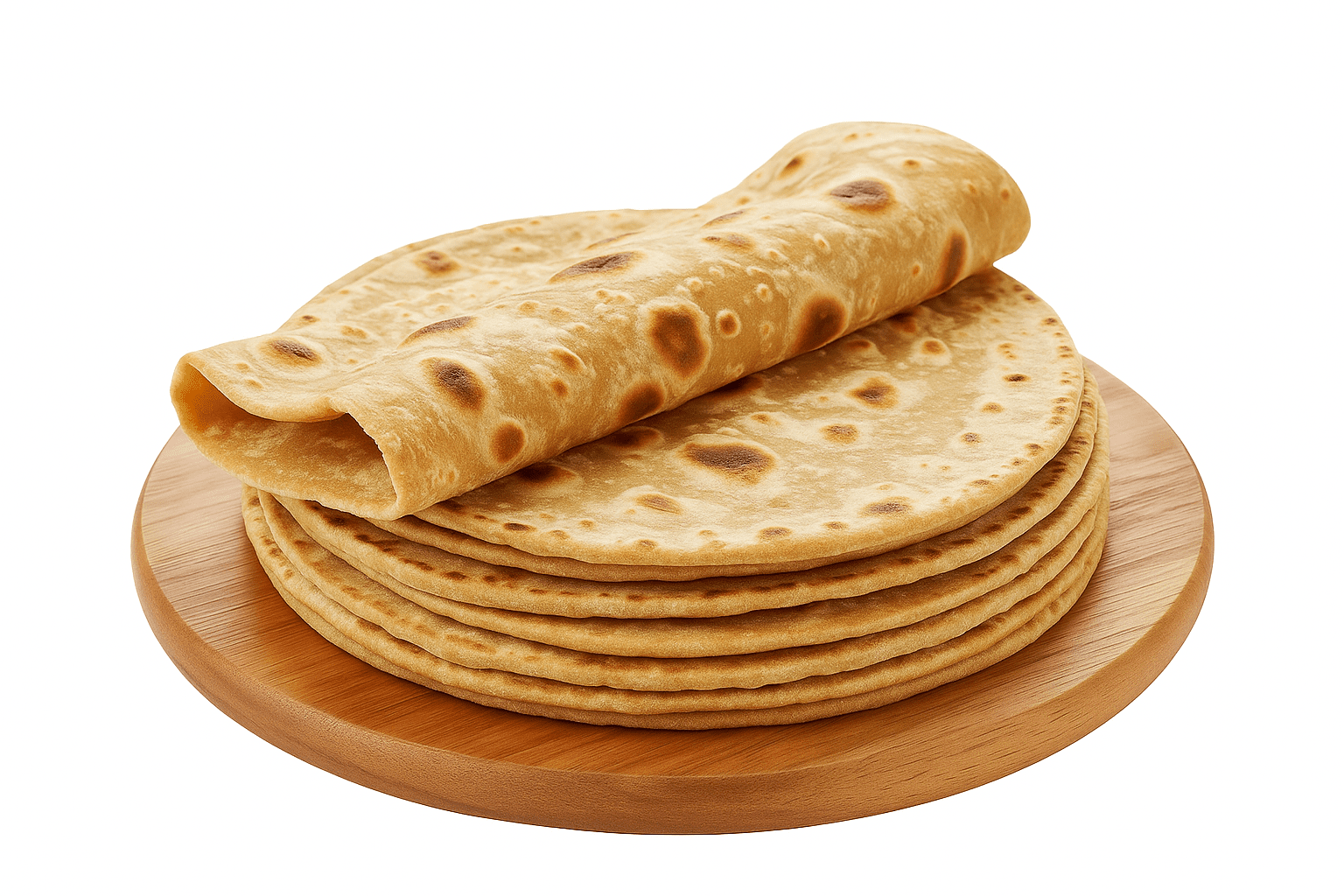
Keeping track of what you eat each day is key to good health, especially if you have diabetes. Many people search for answers to questions like “Is chapati good for diabetes?” or “Chapati sugar content?” The good news is that whole-wheat chapati can fit into a diabetes-friendly diet when eaten in moderation.
The Comfort of Chapati
Growing up, the warm smell of freshly roasted chapatis always meant dinner was ready. I can still picture myself sitting on the kitchen counter, watching the dough puff up on the hot tawa while a spoonful of ghee on top. For many of us, chapati is not just food; it is comfort and the taste of home.
How Many Chapatis Can You Eat?
If you are confused about how many chapatis you can eat or how to pair them with vegetables or protein to keep blood sugar levels steady, Fitterfly is here to help. Our team of nutritionists and health coaches creates personalised meal plans based on your blood sugar readings, lifestyle and food habits. They will guide you on exactly how many chapatis suit your needs and how to balance them with other foods so you can keep enjoying this childhood favourite without any worry.
Nutritional Profile:
The nutritional information of chapati in small, medium and large sizes, approximately, is based on Fitterfly’s proprietary tool ( Ntuitive app)*
| Nutrient | Small | Medium | Large |
| Calories | 75 k cal | 85 k cal | 107 k cal |
| Carbohydrates | 15 g | 17 g | 21 g |
| Proteins | 2 g | 3 g | 4 g |
| Fat | 0 g | 0 g | 1 g |
| Fibre | 3 g | 3 g | 4 g |
Glycemic Index Chapati:
The glycemic index tells us how fast a food raises blood sugar in the body. Foods with a high GI are digested quickly, causing blood sugar levels to rise, while foods with a low GI are digested slowly, keeping blood sugar levels more stable.
Chapati glycemic index can change depending on the type of flour used for making, how it is cooked, and the portion size. Chapati made from whole wheat flour usually has a lower GI than chapati made from refined flour.
Some studies suggest that a whole-wheat chapati has a GI of around 55-70, depending on the preparation method and the ingredients used. Chapati made from white flour generally has a higher GI than one made with whole wheat.
The glycemic index shows the effect of foods on blood sugar, but it does not give the whole picture. Each person’s body responds differently to the same food, a concept called Personalised Glycemic Response.
Factors such as the type and composition of food, portion size, food combinations, cooking method, meal timing and frequency, physical activity levels, stress and sleep, gut health and digestion, hydration levels, and even your level of physical activity can influence how your blood sugar responds after eating a chapati.
That is why checking your blood sugar before and after meals can be so valuable. At Fitterfly, we use Continuous Glucose Monitoring (CGM) and meal tracking to help you see your own unique patterns.
Real Example of How PGR Helps:
And that’s also where your Personalised Glycemic Response (PGR) comes in – it shows how your body reacts to your food.
Even something as common as a chapati can affect two people very differently.
To see how this works in real life, let’s look at one of our Diabetes Prime Program members, Mr Arya.
One of his favourite lunch thalis was simple – two chapatis, karela sabji (a Jain dish), and a small bowl of plain curd. It looked healthy enough, but when our Nutrition Coaches tracked his blood sugar, it told another story.
Before lunch, his reading was 120 mg/dL. An hour later, it spiked to 198 mg/dL, and even after two hours, it stayed at 160 mg/dL, which is not good. His PGR score for this meal was 5, indicating that his body was struggling to manage the rise in sugar from this combination.
We didn’t want Mr Arya to give up what he enjoyed. Instead of giving him a completely different meal plan, our nutrition coaches suggested small, smart changes – such as reducing the chapati portion slightly, adding a bowl of moong dal for protein, and including some cucumber for extra fibre.
When he made these tweaks, the difference was clear.
Before lunch, his blood sugar was 130 mg/dL, and two hours later, it remained at 130 mg/dL — steady and well within the safe zone. His PGR score improved from 5 to 8, showing better control and balance.
These small adjustments helped him continue enjoying his regular lunch without giving up taste or comfort – and that’s the real value of knowing your PGR.
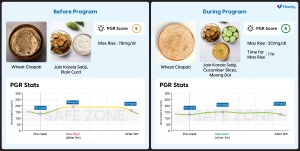
What are the Smart Ways to Include Chapati in a Diabetes-Friendly Diet?
Choose Whole Wheat Flour: Always choose whole wheat flour, also known as atta, as it has a higher fibre content compared to refined flour and reduces its glycemic impact.
Mix Flours for Extra Benefits: Adding other flours to the mix makes chapati even healthier, and flours like barley, flaxseed, green gram, and chickpea (besan) can be added.
Control the Portion Sizes: Eat chapatis in moderate amounts, as the ideal number can differ based on your target blood sugar levels, current weight, activity level, and present glucose readings. Eating too many can increase your total carbohydrate intake and may affect blood sugar control.
Pair with Protein and Vegetables: Enjoy chapati with protein-rich foods and non-starchy vegetables to balance your meal and maintain steady blood sugar levels.
Protein sources: Panner, dal, eggs, chicken or fish
Vegetable sources: Spinach, beans, cabbage, or carrots
For example: Chapati+ grilled chicken+ stir-fried vegetables
Chapati+ paneer bhurji + salad
| A point to remember: Preheat your tawa, as a hot surface puffs the chapati quickly without the need to add oil. |
What is the Best Time to Eat Chapati for People with Diabetes?
Eating chapati at the right time can help manage blood sugar better
Breakfast or Lunch: These are the best times to include chapati because your body is active during the day and can effectively utilise the energy from carbohydrates, and it has to be eaten in limited amounts.
Evening or Night: Try to avoid eating large amounts of chapati at night, as your body is less active at this time. If you want to eat chapati for dinner, limit it to one small chapati and pair it with vegetables or protein to minimise the impact on your blood sugar levels.
What Happens if You Overeat Chapatis?
Chapati is high in carbohydrates, so eating too many at once can quickly raise blood sugar levels.
Eating more chapatis means consuming more calories over time, which can cause weight gain and worsen insulin resistance.
Wheat contains gluten, which can cause stomach upset and damage to the gut in people with celiac disease or gluten sensitivity.
| Also read: Chapati for Weight Loss- What Do The Experts Say? |
Takeaway:
Is chapati good for diabetes? The simple answer is that eating them in moderation is safe. Whole wheat chapati has a low to medium glycemic index, which helps to prevent sudden spikes in blood sugar levels. Pair chapatis with protein-rich foods, healthy fats, or vegetables can make them more nutritious and better for blood sugar control. However, consuming too many chapatis at once can lead to a rise in blood sugar levels, weight gain, and digestive issues. And most importantly, always consult your doctor before making major changes to your diet.
How Can We at Fitterfly Help You?
Managing diabetes does not mean you have to stop or avoid eating the foods you love entirely. You just need to be mindful of how much you eat, what you pair it with, and when you eat it.
At Fitterfly, we believe that managing diabetes should be personal, scientific, and easy to follow, rather than relying on strict rules. With the help of Personalised Glycemic Response(PGR) and Continuous Glucose Monitoring (CGM), we show you how your body reacts to different foods so you can eat smarter without giving up your most liked foods.
Instead of heavy and strict restrictions, we guide you on how much to eat, what to combine, and how to manage your sugar intake.
For example, Mr Arya learned to eat roti with tomato egg curry with mixed vegetable salad without spikes. In short, we help you find what foods work best for YOU.
And it is not just about food. Our Fitness and Success Coaches support you with the proper exercise, pain relief, stress management, and better sleep. With expert care and real-time guidance, you can confidently manage your diabetes and live a healthier life.
Call us at 08068507599 for more information or for a one-on-one, personalised consultation with our expert Nutrition Coach.
This blog provides general information for educational and informational purposes only and shouldn't be seen as professional advice.
Frequently Asked Questions
Can people with diabetes eat chapati?
Yes, people with diabetes can eat chapati. The amount you eat should depend on your current weight, blood sugar levels, physical activity, and medications. Whole wheat chapati is preferable to refined flour options.
Are there ways to make chapati better for diabetes?
Use whole wheat flour or mix it with other flours, such as barley, flaxseed, green gram, and chickpea. Pair with vegetables, dals, and protein to slow the glucose absorption.
Can chapati cause weight gain in diabetes?
Yes, overeating chapatis or any other food adds extra calories, which can lead to weight gain and worsen insulin resistance.













